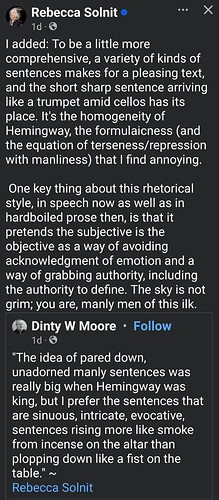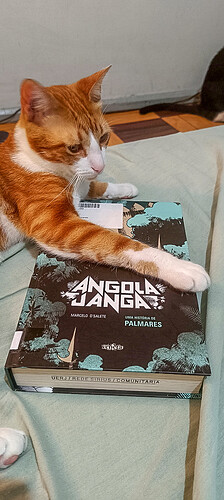I love her! She should also be held up, if she isn’t already, as a gay icon. I think there was an unofficial “don’t ask, don’t tell” during FDR’s terms. Just so long as you were reliable, did your job competently, and didn’t need to sign a loyalty oath because your loyalty was apparent and sincere, no problem.
Exclusive interview & pix!
Deadpool is apparently the Dobie Gillis of the MCU. If you don’t know what I mean by that, please ask!
Mr. Thomas doesn’t get the credit he deserves in regards to the MCU. Pisses me the fuck off.
Stephanie says if her book was purely fiction, with the same story arcs, she would have made Frances gay. However, she says the evidence just isn’t there–and Stephanie is an excellent researcher. Also Perkins was a serious Catholic. If she was gay, perhaps she wouldn’t have acted on it.
I just completed reading a collection of stories by Ring Lardner titled “Round Up.” This is most, if not all, of his short stories written for magazines between, roughly, 1910 – 1930.
It was a lot of stories, in very small type, on very thin paper. The book was printed sometime around 1940 (Modern Library books are hard to date) and had suffered some water damage during the past century. So, it was a bit hard to read, but the stories were very good.
I started reading this book in August 2011. I got about halfway through before entering into a personal era known as “the Great Disruption.” Over the past year I have finally been able to re-acquaint myself with my books. I couldn’t remember much from it, so naturally I started at the beginning.
Many of the stories are light-hearted observations of everyday life. This makes the darker stories stand out. Stories such as:
- “Champion” — A boxer rises to the top while being one of the basest human beings you can imagine. Written in blunt, short sentences. It concludes with his agent telling the press his life with all the details reversed.
”Suppose you can prove it,” that gentleman would have said, “It wouldn’t get us anything but abuse to print it. The people don’t want to see him knocked. He’s champion.”
- “My Roomy” — A very talented baseball player with odd, threatening personal habits. No one wants to room with him. At the end of the season the team lets him go. He returns to his small hometown and nearly beats his ex-fiancé and her husband to death with a baseball bat. He ends up in a mental institution.
Old Roomy: I was at bat twice and made two hits; but I guess I did not meet ‘em square. They tell me they are both alive yet, which I did not mean ‘em to be. I hope they got good gurve-ball pitchers where I am goin’. I sure can bust them curves—can’t I, sport?
Yours,
B. Elliott
P.S.—The B stands for Buster.
-
“Haircut” — Probably his most famous story. I’m pretty sure this inspired “Sling Blade.”
-
“Old Folks Christmas” — Parents have worked themselves up from poverty to wealth. They want to give their children a grand Christmas when they return home from college. The kind of Christmas they couldn’t afford when they were young. Their children are self-centered, shallow and greedy.
-
“Now and Then” — An epistolatory story taking place over a number of years. A woman writing to her friend about her husband, who is apparently very controlling, and their disintegrating marriage. She continues to be optimistic throughout.
Themes throughout the book:
Sports
Lardner started out as a sports reporter, and his stories provide an inside look at the oddballs that populate baseball and boxing. His sports stories are usually about talented people who don’t realize they are being self-destructive. The baseball stories and game play are easily relatable, but definitely take place before the era of free agency.
Bridge
Ample evidence is provided that bridge was pretty popular in the first half of the 20th century. It was like a cross-table equivalent to an MMOG. Massively multiplayer with actual people. One of the stories, “Contract,” was so deeply into the game that I had to skip it. I had no idea what was going on.
Alcohol
Drinking is a constant theme through the stories. Sometimes moderate drinking, sometimes excessive. Getting a hold of it might have been a bit difficult, but the consumption of it is treated as nothing out of the ordinary. There is only one couple who turn down a drink.
”Are these—is it liquor?” asked Jennie.
”Just Bacardi, and they’re awfully mild,” said Rita.
”But Bob and I don’t indulge at all,” said Jennie.
”This wouldn’t be indulging,” urged Stu. “This is practically a soft drink.”
”I know, but it would be violating the letter of the law,” said Jennie.
Radio
Radio occasionally makes an appearance. Various forms of entertainment are central to the stories, but they are usually of the in-person variety: Vaudeville, theatre, lectures, bridge.
The most detailed description of the device is in “Reunion.” This is the story about a brother and sister separated as children and meeting again as adults. The sister and her husband, who live outside New York, have no time for radio. The brother and his wife, who live in rural Michigan, are great enthusiasts.
”Have you got a radio?” asked Bob. He pronounced the “a” short, as in Buchanan.
”I’m sorry to saw we haven’t,” said Stu, who wasn’t sorry at all.
”I don’t know how you get along without one,” said Bob.
”We just live for ours!” said Jennie.
“What is it, an Atwater-Kent?” asked Rita.
She had seen that name in some paper yesterday.
“No,” replied Bob. “It’s a Ware Neutrodyne, with a Type X receiver.”
“And an Ethovox horn,” added Jennie. “We had Omaha one night.”
“You did!” said Rita.
There was silence, which was broken by Bob’s asking his sister how often she went to New York…”
Train Travel
Imagine a triangle formed by Chicago, Palm Beach and New York. Most of his stories exist in these cities, or on the train lines that connect them. Being a train traveler myself, I found this aspect of the stories to be something that made me think the most.
Much is made about how the Interstate Highway System bypassed and isolated small towns, but air travel did the same thing. There was no “fly-over land” at the time these stories were written. Cities such as South Bend, Elkhart and Toledo were not abstract names. Multiple trains passed through or stopped at these smaller cities everyday. They were known then, as I know them now. It wasn’t unusual to have friends or family living in such places. A personal network on a network of rails.
It was, no doubt, more convenient to get from Chicago to Kalamazoo then than it is now. You could get off the train at Kalamazoo, meet people, then continue on to New York at your convenience, by way of Detroit and Buffalo. Yes, there was a major train route that connected Chicago to New York and ran north of Lake Erie. There isn’t one now.
Editor’s note. This turned out to be much longer than I anticipated. So long in fact, that I could not review it. I apologizes for any mistakes.
That sounds so of it’s time. I love reading things like that.
I do wish the trains here still ran like they used to. It’s absurdly much quicker to take a bus, even quicker to take a bus up north, to then go southeast. To get from the same departure station to the same arrival station, but many hours quicker to take a bus vs the trains that go through the same stations.
That’s kind of irrelevant to the book you were describing, though.
It sounds a lot like the original Alfred Hitchcock Presents series, which I’ve been watching and loving. I like how in the intros he always describes it as a play. Not a ‘show’, but a play. And things like radio, and train travel, and alcohol feature prominently in the stories.
One of Lardner’s short stories is in the anthology, “Desert Island Decameron”, compiled by H. Allen Smith. Parker, Wolcott, Benchley, Runyon, Mencken, Lardner, et al; all those folks that were writing a hundred or so years ago and doing well at it
I just got done reading “Aunt Polly’s Story of Mankind”, by Donald Ogden Stewart (he wrote “The Philadelphia Story” for the screen), copyright 1923. It’s printed on thick, pulp paper, I think, and their outside edges of the pages are cut unevenly from section to section
You might like Smith’s work. Someone called him “the screwball’s Boswell”, and he was and sooo much more. Nearly all of his early work takes place in NYC in the late 1930s-1940s, and he wrote mostly non-fiction. His first book was a failure, published in 1939: “Mister Klein’s Kampf or His Life as Hitler’s Double”.
The Calculating Stars by Mary Robinette Kowal.
A meteor strikes the Chesepeake in 1952. There’s a crash program to expand the space program before a runaway greenhouse effect. Told from the perpective of a computer and former WASP pilot. Some F/M sex scenes.
Angola Janga, the Little Angola, was a Quilombo called Palmares, a settlement founded by enslaved people who managed to escape from sugar plantations and other places of forced work of the colonial Brazil. Angola Janga mix fact and fiction, with historical characters and others who really could have existed, this comic book tells the history of a man who witness the fall of the largest Quilombo of Americas.
It is told as an adventure, but Mr. D´Salete made an extensive research on the subject and didn’t let the comic book become as shallow as a saucer.
[NPR Review: ‘Angola Janga,’ By Marcelo D’Salete : NPR]
Thank you, sounds excellent!
It is very good. Mr. D´Salete is such a talented guy. The comics has a kind of cinematographic energy, but as He is also a teacher, it has a lot of info on the subject of the enslaved people. It was the tragedy that shaped our nation and We still feel the impacts of this inhumane injustice. Books like this are important, as well-sponsored reactionary forces are slowly trying to rewrite the country’s history, to combat a windmill that they call the school indoctrination of youth.
Addendum:
I’d put him in Crumb’s category. They both acknowledge but don’t necessarily brag about their exploits. And both are/were dedicated fathers, as well as both having terribly abusive fathers…and now I wanna read the two short books that Crumb illustrated.
Yes. And of course, both were incredibly sexist sometimes too (and in Crumb’s case, racist).
I liked the doc, thank you. Good to hear that when Buk wasn’t drunk, he treated those around him better. I’m torn by the host’s claim at the end that there’s a lot of wheat to be found amidst the chaff in Buk’s writing. I’ve found that’s true of Hemingway’s writing too. Still, in both cases, as with the writings of so many hard drinking male writers, it’s a lot of winnowing for my tastes. I hope you have a better time with it!
Oh yeah, that too, unfortunately.
Thank goodness we were blessed with Kurt Vonnegut for so long.
“Post Office” is a very short book, more like a novella. It’s 160 pages long.
I like his style, he’s got a great way with descriptions. My dad was no drunk, but still - some of the stuff he had to deal with on his route parallels with Buk’s hyperbolic tales.
I watched a clip of “Barfly”. Mickey Rourke was a little too young, I think, and Buk said that his performance was too exaggerated. From, the clip, I couldn’t tell. They should’ve gotten someone like Lance Henrikson. Or even Nicholson, gawd knows he could’ve pulled it off in 1987, they year “Barfly” came out. That was the year “The Witches of Eastwick” came out, I think.




